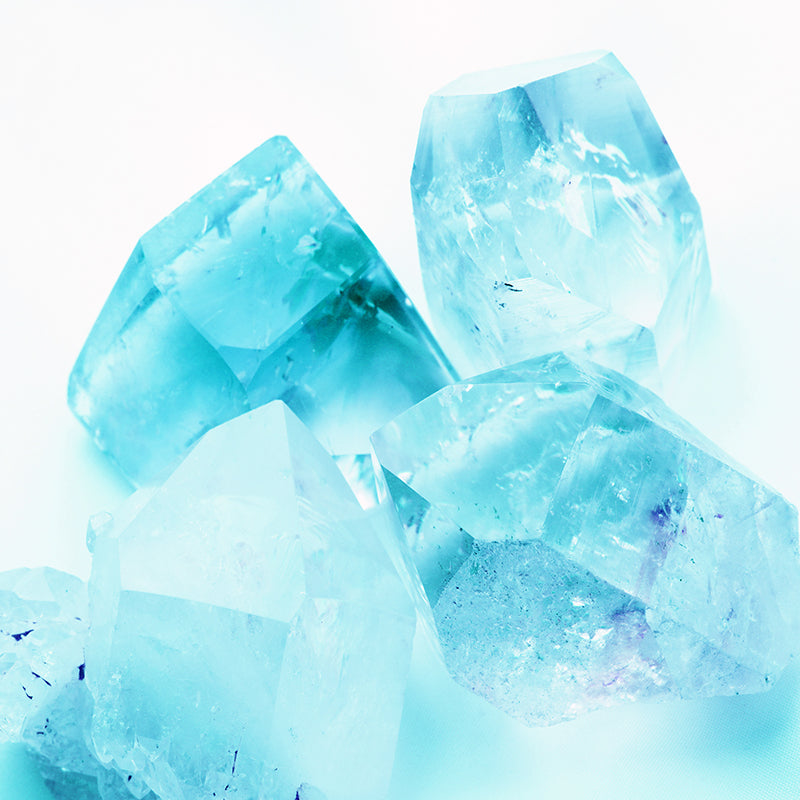
Aquamarine is the color of sea-foam, and it’s the birthstone for March. This mermaid jewel is surrounded by lore and legend – for instance, Aquamarine once believed to protect the wearer from storms at sea, not to mention toothaches and the effects of poison!
Aquamarine is sometimes called “The Sailor’s Gem” because it’s named for the sea-foam, and in ancient times, people believed that wearing an Aquamarine could protect ocean-travellers from storms. Today, this exquisitely subtle gemstone is enjoyed as the birthstone for March, and it’s on the rise as one of the world’s most popular gemstones. And Aquamarine is the traditional stone used to commemorate the 19th wedding anniversary.
NAMED FOR PRECIOUS BLUE-GREEN WATER
In ancient times as is the case today, clean-drinking water was precious and sometimes scarce, especially in the arid regions around the Mediterranean. Because of its resemblance to water, many folk-beliefs arose around the Aquamarine.
Many cultures believed that adorning sacred places or objects with Aquamarine could bring needed rainfall. And conversely, they often also believed that Aquamarine could be used to inflict drought on enemies.
In the year 75 C.E., the philosopher Pliny the Elder wrote, “…the lovely Aquamarine, which seems to have come from some mermaid’s treasure house, in the depths of a summer sea, has charms not to be denied.” Roman fishermen wore it not only for safe seafaring, but also to ensure a plentiful catch.
Because Aquamarine is associated with water, it is often compared with Moonstone for its flowing, peaceful, aquatic energy. Today, many wear Aquamarine to “move out” of stuck energy blockages, and protect and purify the innermost essence in order to facilitate healing.
In classical Egypt, the transparent, frosty blue-green stone was believed to impart immortal life, and was often included in the burial accessories of the deceased.
Metaphysical practitioners maintain that Aquamarine is by nature a calming gemstone. In Roman times, this stone was often worn as an amulet, to relieve pain. The energy of this stone is serene, and it’s often worn to release anxiety and restlessness. It’s also recommended as a confidence-building gem for those who fear public speaking. Aquamarine is also worn in order to clear confusion and get organized.
A FROG FOR FRIENDSHIP, AND A SAINT’S STONE
The Romans also held the curious belief that an image of a frog carved into Aquamarine could turn enemies into friends, and reconcile differences. For this reason, Aquamarines inscribed with frogs were often used on goblets given as wedding gifts, to assure that marital spats would blow over quickly – alluding to Aquamarine’s perceived power as the preventer of storms at sea.
Roman diplomats also carried Aquamarines when going into important negotiations, to give them the power of successful persuasion.
Early Christians associated the watery blue-green gem with St. Thomas, who travelled all over the then-known world to preach the Gospel.
In the European Middle Ages, Aquamarine was prized as an antidote to poison. While most gemstones credited with this power had to be finely ground and dissolved into a potion, many believed that simply wearing an Aquamarine would render poisons harmless.
During this time, Aquamarine was also believed to be useful in finding lost or hidden objects, as well as a powerful stone for foretelling the future. Aquamarines of great size were cut and polished into spheres, a “crystal ball” that would divine the unseen. Smaller Aquamarines were used to spell out messages from the spirit world when suspended from a thread over a pan of water which contained floating alphabet letters.
IS AQUAMARINE A CURE-ALL?
The array of beliefs surrounding the Aquamarine seem to suggest that everyone should have at least one of these seawater-blue gemstones!
The gem was worn centuries ago to bring victory in battle and legal disputes, and was even used to cure common ailments including belching, yawning, toothaches, and ailments of the jaws, throat, stomach and liver.
Some of this practice is still present today, among healers who base their practice on the chakras. Many associate Aquamarine with the throat chakra, explaining its value for singers as well as public speakers.
In the second century B.C.E., Damigeron recommended Aquamarine as a cure for eye disease. The cure consisted either of bathing the eyes with water that had been used to soak an Aquamarine, or by sprinkling the powdered gemstone directly into the eyes each morning.
THE SCIENCE BEHIND THE MAGIC
Aquamarine belongs to the Beryl family of gemstones which also includes Emeralds. Aquamarine often occurs as hexagonal-shaped, long, prismatic crystals. This gemstone often displays pleochromism, presenting multiple color shades at once. It’s a suitably hard stone, registering 7.5 on the Mohs Scale meaning that this jewel is as durable as it is lovely, and can be worn with confidence every day.
Perhaps the most famous Aquamarine is the 10,363 carat “Dom Pedro”, named after the first emperor of Brazil. This remarkable gem holds the title of being the largest piece of Aquamarine ever to be cut.
Discovered by three Brazilian miners in Pedra Azul (which means “blue stone” in Portuguese!), Brazil in the late 1980s, the original raw gem was a single massive crystal that measured 3 feet in length and weighed 100 pounds.
Not only was the rough stone large – it was also a crystal of exceptional quality, clear and deeply colored. Then, oops, this happened: as the three prospectors wrestled the gigantic crystal out of the mine, the specimen was accidentally dropped. It broke into three pieces, the Dom Pedro being the largest fragment.
The two smaller pieces were sold and fashioned into millions of dollars worth of jewelry.
Even with those two parts broken off, the remaining piece of Aquamarine was formidable. The six-sided shaft was two feet long and six inches in diameter.
Master gem cutter and artist/sculptor Bernd Munsteiner of Idar-Oberstein, Germany transformed the rough stone into an incredible obelisk in 1992. The back of the obelisk is carved in a bold lozenge-pattern of starbursts which capture and refract slight so that the sea-water green column seems to blaze with fire.
Munsteiner studied the crystal for four months before he even touched it. He then spent the next six months cutting, faceting and polishing it. The process was lengthy because Munsteiner would only allow himself to work on the project two hours a day, fearing that the slightest bit of fatigue or distraction would cause a slip of the hand that would ruin the piece.
He named the piece “Ondas Maritimas” (sea-waves), starting out by drawing dozens of grooves or “negative facets” at differing angles on the back surface, trapping the ambient light. At last he picked up a diamond-coated cutting wheel and spent the next six months finishing the sculpture.
The Dom Pedro was slated to be cut into many smaller stones, but luckily two benefactors, Jane Mitchell and Jeffrey Bland, purchased it in 1999 and donated it to the Smithsonian National Museum of History in Washington, D.C. in 2011. This Aquamarine, out of view for more than a decade and now housed in the Smithsonian’s National Gem and Mineral Collection, is considered the one gem that can rival the Hope Diamond.

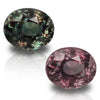 Alexandrite
Alexandrite Amethyst
Amethyst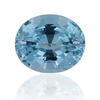 Aquamarine
Aquamarine Chrysoberyl
Chrysoberyl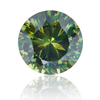 Demantoid
Demantoid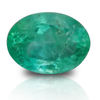 Emerald
Emerald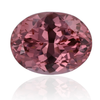 Garnet
Garnet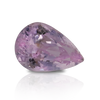 Kunzite
Kunzite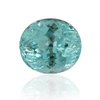 Paraiba
Paraiba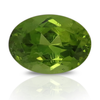 Peridot
Peridot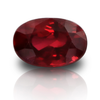 Ruby
Ruby Sapphire
Sapphire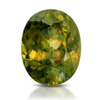 Sphene
Sphene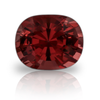 Spinel
Spinel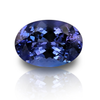 Tanzanite
Tanzanite Topaz
Topaz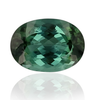 Tourmaline
Tourmaline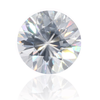 Zircon
Zircon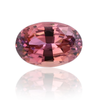 Zoisite
Zoisite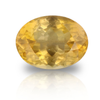 Rare Gemstones
Rare Gemstones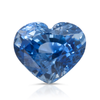 Heart Shape
Heart Shape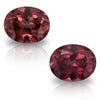 Matched Duo
Matched Duo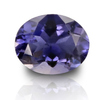 Everyday Candy
Everyday Candy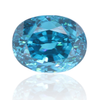 Insta Therapy
Insta Therapy Mini-Splurge
Mini-Splurge

